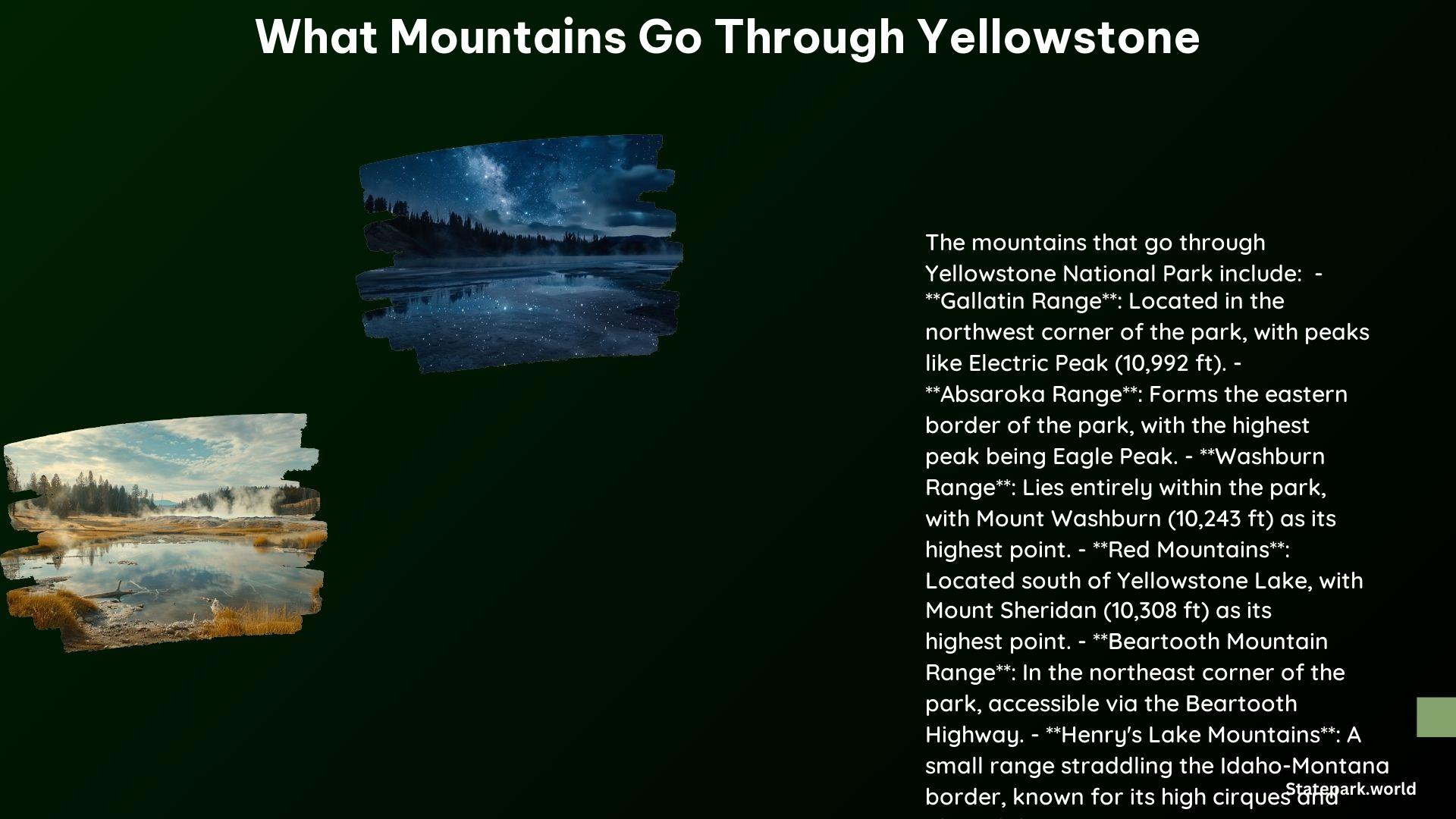Yellowstone National Park is home to several mountain ranges, both within and beyond its boundaries. These mountains offer breathtaking views, diverse ecosystems, and a wealth of outdoor activities for visitors to explore. In this blog post, we’ll dive into the key details about the mountains that go through Yellowstone National Park.
Mountains and Ranges within Yellowstone National Park
Yellowstone National Park is home to two major mountain ranges that are completely enclosed within its boundaries:
-
Washburn Range: This range is located in the north-central part of the park and is named after Henry Dana Washburn. It includes Mount Washburn, which is a popular hiking destination and reaches an elevation of 10,243 feet.
-
Red Mountains: This range is located south of Yellowstone Lake and includes Mount Sheridan, which reaches an elevation of 10,308 feet. The Red Mountains are thought to have once been connected to the Washburn Range before an eruption of the Yellowstone Caldera.
Major Mountain Ranges Extending Beyond Yellowstone National Park

While the Washburn Range and Red Mountains are contained within the park, there are two other major mountain ranges that extend beyond the boundaries of Yellowstone National Park:
-
Gallatin Range: This range is located on the northwestern side of the park and extends beyond the park’s boundaries. It includes Electric Peak, which reaches an elevation of 10,992 feet. The Gallatin Range is known for its rugged terrain and is home to grizzly bears.
-
Absaroka Range: This range defines the eastern border of Yellowstone and extends beyond the park. It includes hundreds of peaks and is known for its jagged and spectacular landscape. The highest peak in the park, Eagle Peak, is located in the Absaroka Range.
Other Notable Mountains and Features
In addition to the major mountain ranges, Yellowstone National Park is home to several other notable mountains and geological features:
- Yellowstone Caldera: A large volcanic caldera that covers a significant portion of the park, measuring 45 miles long and 28 miles wide.
- Mount Hancock: An isolated peak with an elevation of 10,223 feet.
- Barlow Peak: Another isolated peak with an elevation of 9,609 feet.
Geological History and Ecosystem
The mountains in Yellowstone were formed through a combination of volcanic activity and tectonic forces. The oldest mountains in the park are found in the Gallatin Range, which were formed during the Sevier Orogeny, a mountain-building phase that began 150-140 million years ago.
The mountains in Yellowstone support a diverse range of flora and fauna, including alpine gardens, mountain goats, bighorn sheep, golden eagles, and rare species like wolverines and peregrine falcons.
Yellowstone National Park is a true natural wonder, with its stunning mountain ranges, diverse ecosystems, and rich geological history. Whether you’re a seasoned hiker, a wildlife enthusiast, or simply someone who appreciates the beauty of the great outdoors, the mountains of Yellowstone are sure to leave a lasting impression.
References
- List of mountains and mountain ranges of Yellowstone National Park. (n.d.). Retrieved from https://en.wikipedia.org/wiki/List_of_mountains_and_mountain_ranges_of_Yellowstone_National_Park
- Camelio, S. (2019, September 9). Park Peaks: The Creation and Significance of Yellowstone’s Mountain Tops. Retrieved from https://www.yellowstone.org/park-peaks-the-creation-and-significance-of-yellowstones-mountain-tops/
- Yellowstone National Park Mountains, Mountain Ranges. (n.d.). Retrieved from https://www.yellowstoneparknet.com/mountains/
- Greater Yellowstone Rockies. (n.d.). Retrieved from https://peakvisor.com/range/greater-yellowstone-rockies.html
- Yellowstone’s Mountain Ranges. (n.d.). Retrieved from https://www.yellowstoneguidelines.com/whats-new/yellowstones-mountain-ranges.html
